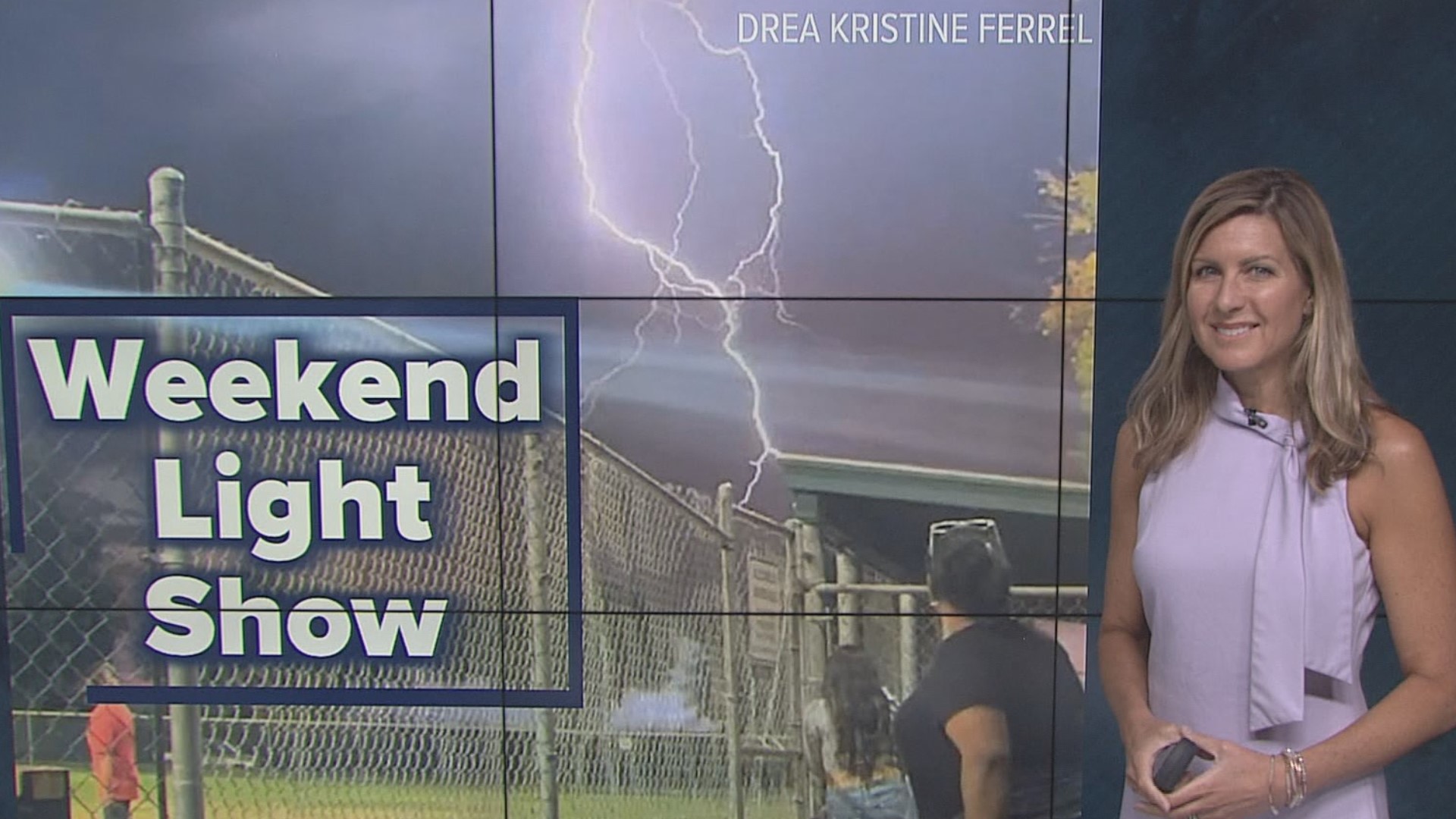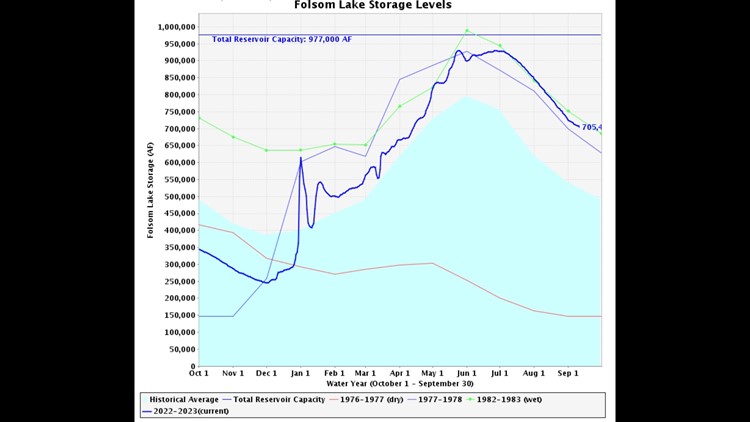SACRAMENTO, California — Reservoirs across the state of California remain elevated as another wet season approaches.
Following the record wet winter, lakes and reservoirs were nearly full to the brim as the melting snowpack made its way into them.
Following the melt-off period, Lake Shasta — the keystone of the Central Valley Project — was at 98% capacity, Oroville was at 100% capacity, and Folsom Lake was nearly full as well at 95% capacity. These bodies of water were quite parched heading into the winter due to the three years of drought preceding the past winter's deluge and ranged from 25-32% capacity before the atmospheric river events rolled in.
Now summer is nearing its end and the reservoirs remain at healthy levels. As of Sept. 12, Shasta is at 76% of capacity (129% of historical average), Oroville is at 79% (138% of historical average) and Folsom is 72% full (135% of historical average).
Reservoir storage Sep 12
Large jumps in storage levels can be explained by the persistent train of atmospheric rivers in both January and March and the steadier rise through the early summer is thanks to the snowmelt period.
Although the wet winter was fantastic in terms of water supply for the thirsty state, it also pushed water infrastructure to the brink and flooding was an issue throughout the winter and spring.
Flooding could once again be an issue with a strong El Niño expected this winter, which is expected to peak in either December or January. El Niño events are typically associated with wet winters in California, particularly in Southern California.

























